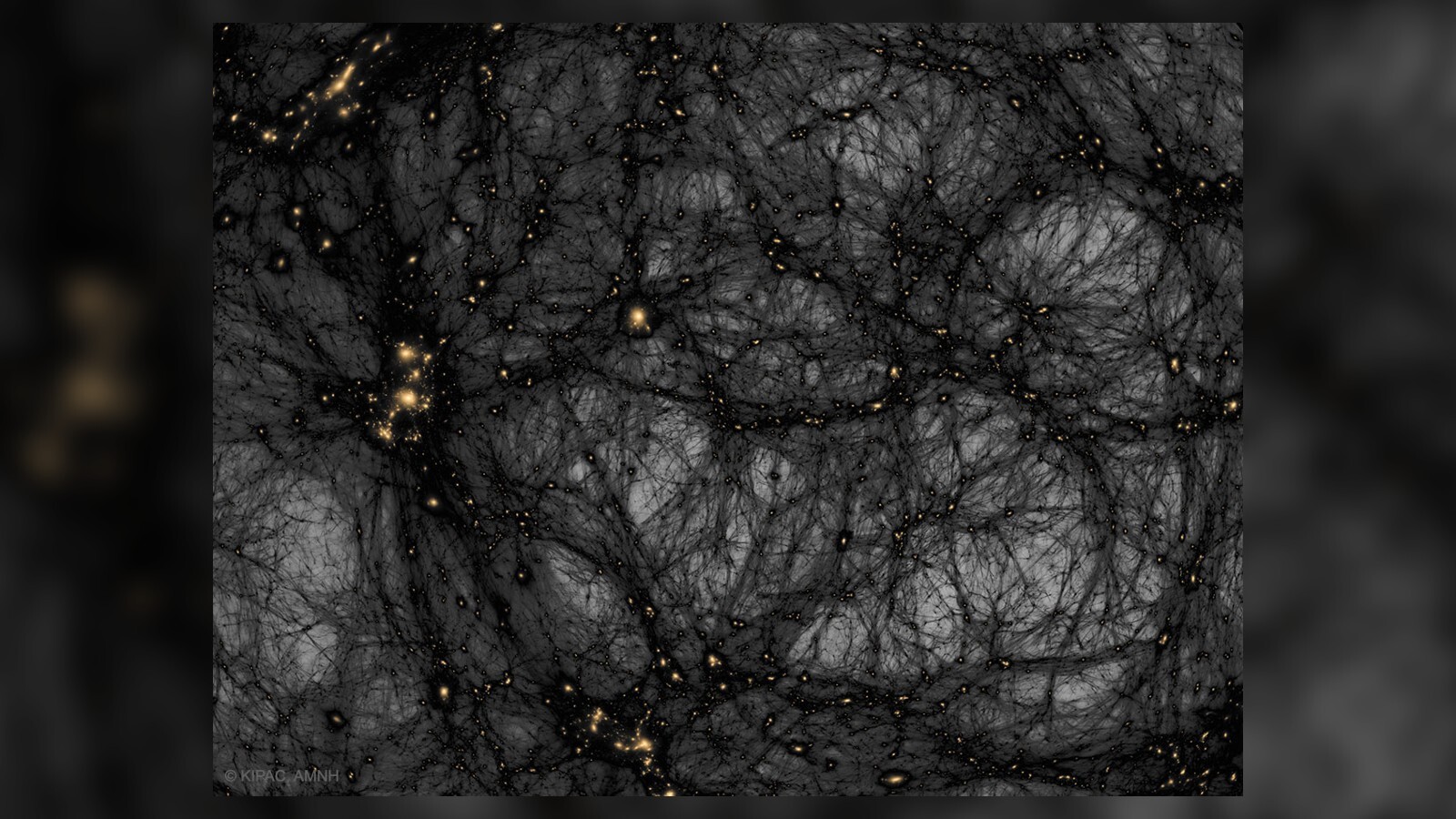9.08.2022
Someday this could be the first direct probe of dark matter using only gravity

The secret to directly detecting dark matter might be blowin’ in the wind.
The mysterious substance continues to elude scientists even though it outweighs visible matter in the universe by about 8 to 1. All laboratory attempts to directly detect dark matter — seen only indirectly by the effect its gravity has on the motions of stars and galaxies — have gone unfulfilled.
Those attempts have relied on the hope that dark matter has at least some other interaction with ordinary matter in addition to gravity (SN: 10/25/16). But a proposed experiment called Windchime, though decades from being realized, will try something new: It will search for dark matter using the only force it is guaranteed to feel — gravity.
“The core idea is extremely simple,” says theoretical physicist Daniel Carney, who described the scheme in May at a meeting of the American Physical Society’s Division of Atomic Molecular and Optical Physics in Orlando, Fla. Like a wind chime on a porch rattling in a breeze, the Windchime detector would try to sense a dark matter “wind” blowing past Earth as the solar system whips around the galaxy.
If the Milky Way is mostly a cloud of dark matter, as astronomical measurements suggest, then we should be sailing through it at about 200 kilometers per second. This creates a dark matter wind, for the same reason you feel a wind when you stick your hand out the window of a moving car.
The Windchime detector is based on the notion that a collection of pendulums will swing in a breeze. In the case of backyard wind chimes, it might be metal rods or dangling bells that jingle in moving air. For the dark matter detector, the pendulums are arrays of minute, ultrasensitive detectors that will be jostled by the gravitational forces they feel from passing bits of dark matter. Instead of air molecules bouncing off metal chimes, the gravitational attraction of the particles that make up the dark matter wind would cause distinctive ripples as it blows through a billion or so sensors in a box measuring about a meter per side.

While it may seem logical to search for dark matter using gravity, no one has tried it in the nearly 40 years that scientists have been pursuing dark matter in the lab. That’s because gravity is, comparatively, a very weak force and difficult to isolate in experiments.
“You’re looking for dark matter to [cause] a gravitational signal in the sensor,” says Carney, of Lawrence Berkeley National Laboratory in California. “And you just ask . . . could I possibly see this gravitational signal? When you first make the estimate, the answer is no. It’s actually going to be infeasibly difficult.”
That didn’t stop Carney and a small group of colleagues from exploring the idea anyway in 2020. “Thirty years ago, this would have been totally nuts to propose,” he says. “It’s still kind of nuts, but it’s like borderline insanity.”
The Windchime Project collaboration has since grown to include 20 physicists. They have a prototype Windchime built of commercial accelerometers and are using it to develop the software and analysis that will lead to the final version of the detector, but it’s a far cry from the ultimate design. Carney estimates that it could take another few decades to develop sensors good enough to measure gravity even from heavy dark matter.
Carney bases the timeline on the development of the Laser Interferometer Gravitational-Wave Interferometer, or LIGO, which was designed to look for gravitational ripples coming from black holes colliding (SN: 2/11/16). When LIGO was first conceived, he says, it was clear that the technology would need to be improved by a hundred million times. Decades of development resulted in an observatory that views the sky in gravitational waves. With Windchime, “we’re in the exact same boat,” he says.
Even in its final form, Windchime will be sensitive only to dark matter bits that are roughly the mass of a fine speck of dust. That’s enormous on the spectrum of known particles — more than a million trillion times the mass of a proton.
“There is a variety of very interesting dark matter candidates at [that scale] that are definitely worth looking for … including primordial black holes from the early universe,” says Katherine Freese, a physicist at the University of Michigan in Ann Arbor who is not part of the Windchime collaboration. Black holes slowly evaporate, leaking mass back into space, she notes, which could leave many relics formed shortly after the Big Bang at the mass Windchime could detect.
But if it never detects anything at all, the experiment still stands out from other dark matter detection schemes, says Dan Hooper, a physicist at Fermilab in Batavia, Ill., also not affiliated with the project. That’s because it would be the first experiment that could entirely rule out some types of dark matter.
Even if the experiment turns up nothing, Hooper says, “the amazing thing about [Windchime] … is that, independent of anything else you know about dark matter particles, they aren’t in this mass range.” With existing experiments, a failure to detect anything could instead be due to flawed guesses about the forces that affect dark matter (SN: 7/7/22).
Windchime will be the only experiment yet imagined where seeing nothing would definitively tell researchers what dark matter isn’t. With a little luck, though, it could uncover a wind of tiny black holes, or even more exotic dark matter bits, blowing past as we careen around the Milky Way.
Quelle: ScienceNews
